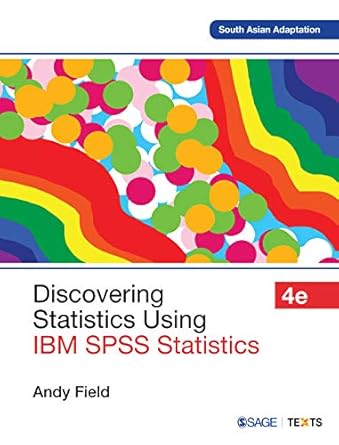Unlocking the Secrets of Structural Equation Modeling with Rex B. Kline's Latest Edition

The fifth edition of Principles and Practice of Structural Equation Modeling by Rex B. Kline is a comprehensive guide that delves into the intricacies of structural equation modeling (SEM). This edition is significantly revised to include all three approaches to SEM, making it an essential resource for both beginners and seasoned researchers in the field of social sciences.
Key Takeaways
- Covers covariance-based SEM, nonparametric SEM, and composite SEM.
- Emphasizes freely available software tools like the R lavaan package.
- Includes new chapters on composite SEM and recent developments in mediation analysis.
- Provides practical exercises with answers and online resources for further learning.
Comprehensive Coverage of SEM Approaches
The book is divided into several sections that cover different aspects of SEM. It starts with an introduction to the basic concepts and gradually moves on to more complex topics. The inclusion of all three SEM approaches—covariance-based, nonparametric, and composite—ensures that readers get a well-rounded understanding of the subject. The use of real-world data examples from various disciplines makes the content relatable and easier to grasp.
Practical Exercises and Online Resources
One of the standout features of this edition is the practical exercises provided at the end of each chapter. These exercises come with answers, allowing readers to test their understanding and apply what they've learned. Additionally, the companion website offers primers on significance testing, regression, and psychometrics, along with data, syntax, and output files for the book's examples. This makes it easier for readers to follow along and practice on their own.
Emphasis on Freely Available Software Tools
In line with the growing trend towards open science, this edition places a strong emphasis on using freely available software tools like the R lavaan package. This not only makes the book more accessible but also ensures that readers can apply SEM techniques without the need for expensive software. The detailed tutorials and annotated syntax provided in the book make it easier for readers to get started with these tools.
New Chapters and Updated Content
The fifth edition includes new chapters on composite SEM, also known as partial least squares path modeling, and recent developments in mediation analysis. These additions make the book more comprehensive and up-to-date with the latest advancements in the field. The extended tutorials on dealing with missing data and instrumental variable methods are particularly useful for researchers dealing with complex datasets.
User Reviews
The book has received positive reviews for its comprehensive coverage and practical approach. One user mentioned, "Arrived quickly and in perfect condition," highlighting the quality of the physical book. Another user appreciated the book's readability and practical recommendations, stating, "I love the walk-through examples with references to real data and syntax." However, some users found the explanations complex and indirect, suggesting that the book might be more suitable for those with a basic understanding of SEM.
For those interested in diving deep into the world of SEM, the Principles and Practice of Structural Equation Modeling by Rex B. Kline is a must-have. Its comprehensive coverage, practical exercises, and emphasis on freely available tools make it an invaluable resource for both students and researchers.
Conclusion
In summary, the fifth edition of Principles and Practice of Structural Equation Modeling is a well-rounded and comprehensive guide that caters to a wide range of readers. Whether you're a beginner looking to get started with SEM or an experienced researcher seeking to update your knowledge, this book has something to offer. The practical exercises, online resources, and emphasis on open-source tools make it a valuable addition to any researcher's library. Don't miss out on this essential resource—get your copy of Principles and Practice of Structural Equation Modeling today!
Unlocking the Secrets of Structural Equation Modeling with Rex B. Kline's Latest Edition

The fifth edition of Principles and Practice of Structural Equation Modeling by Rex B. Kline is a comprehensive guide that delves into the intricacies of structural equation modeling (SEM). This edition is significantly revised to include all three approaches to SEM, making it an essential resource for both beginners and seasoned researchers in the field of social sciences.
Key Takeaways
- Covers covariance-based SEM, nonparametric SEM, and composite SEM.
- Emphasizes freely available software tools like the R lavaan package.
- Includes new chapters on composite SEM and recent developments in mediation analysis.
- Provides practical exercises with answers and online resources for further learning.
Comprehensive Coverage of SEM Approaches
The book is divided into several sections that cover different aspects of SEM. It starts with an introduction to the basic concepts and gradually moves on to more complex topics. The inclusion of all three SEM approaches—covariance-based, nonparametric, and composite—ensures that readers get a well-rounded understanding of the subject. The use of real-world data examples from various disciplines makes the content relatable and easier to grasp.
Practical Exercises and Online Resources
One of the standout features of this edition is the practical exercises provided at the end of each chapter. These exercises come with answers, allowing readers to test their understanding and apply what they've learned. Additionally, the companion website offers primers on significance testing, regression, and psychometrics, along with data, syntax, and output files for the book's examples. This makes it easier for readers to follow along and practice on their own.
Emphasis on Freely Available Software Tools
In line with the growing trend towards open science, this edition places a strong emphasis on using freely available software tools like the R lavaan package. This not only makes the book more accessible but also ensures that readers can apply SEM techniques without the need for expensive software. The detailed tutorials and annotated syntax provided in the book make it easier for readers to get started with these tools.
New Chapters and Updated Content
The fifth edition includes new chapters on composite SEM, also known as partial least squares path modeling, and recent developments in mediation analysis. These additions make the book more comprehensive and up-to-date with the latest advancements in the field. The extended tutorials on dealing with missing data and instrumental variable methods are particularly useful for researchers dealing with complex datasets.
User Reviews
The book has received positive reviews for its comprehensive coverage and practical approach. One user mentioned, "Arrived quickly and in perfect condition," highlighting the quality of the physical book. Another user appreciated the book's readability and practical recommendations, stating, "I love the walk-through examples with references to real data and syntax." However, some users found the explanations complex and indirect, suggesting that the book might be more suitable for those with a basic understanding of SEM.
For those interested in diving deep into the world of SEM, the Principles and Practice of Structural Equation Modeling by Rex B. Kline is a must-have. Its comprehensive coverage, practical exercises, and emphasis on freely available tools make it an invaluable resource for both students and researchers.
Conclusion
In summary, the fifth edition of Principles and Practice of Structural Equation Modeling is a well-rounded and comprehensive guide that caters to a wide range of readers. Whether you're a beginner looking to get started with SEM or an experienced researcher seeking to update your knowledge, this book has something to offer. The practical exercises, online resources, and emphasis on open-source tools make it a valuable addition to any researcher's library. Don't miss out on this essential resource—get your copy of Principles and Practice of Structural Equation Modeling today!
Unlocking the Secrets of Structural Equation Modeling with Rex B. Kline's Latest Edition

The fifth edition of Principles and Practice of Structural Equation Modeling by Rex B. Kline is a comprehensive guide that delves into the intricacies of structural equation modeling (SEM). This edition is significantly revised to include all three approaches to SEM, making it an essential resource for both beginners and seasoned researchers in the field of social sciences.
Key Takeaways
- Covers covariance-based SEM, nonparametric SEM, and composite SEM.
- Emphasizes freely available software tools like the R lavaan package.
- Includes new chapters on composite SEM and recent developments in mediation analysis.
- Provides practical exercises with answers and online resources for further learning.
Comprehensive Coverage of SEM Approaches
The book is divided into several sections that cover different aspects of SEM. It starts with an introduction to the basic concepts and gradually moves on to more complex topics. The inclusion of all three SEM approaches—covariance-based, nonparametric, and composite—ensures that readers get a well-rounded understanding of the subject. The use of real-world data examples from various disciplines makes the content relatable and easier to grasp.
Practical Exercises and Online Resources
One of the standout features of this edition is the practical exercises provided at the end of each chapter. These exercises come with answers, allowing readers to test their understanding and apply what they've learned. Additionally, the companion website offers primers on significance testing, regression, and psychometrics, along with data, syntax, and output files for the book's examples. This makes it easier for readers to follow along and practice on their own.
Emphasis on Freely Available Software Tools
In line with the growing trend towards open science, this edition places a strong emphasis on using freely available software tools like the R lavaan package. This not only makes the book more accessible but also ensures that readers can apply SEM techniques without the need for expensive software. The detailed tutorials and annotated syntax provided in the book make it easier for readers to get started with these tools.
New Chapters and Updated Content
The fifth edition includes new chapters on composite SEM, also known as partial least squares path modeling, and recent developments in mediation analysis. These additions make the book more comprehensive and up-to-date with the latest advancements in the field. The extended tutorials on dealing with missing data and instrumental variable methods are particularly useful for researchers dealing with complex datasets.
User Reviews
The book has received positive reviews for its comprehensive coverage and practical approach. One user mentioned, "Arrived quickly and in perfect condition," highlighting the quality of the physical book. Another user appreciated the book's readability and practical recommendations, stating, "I love the walk-through examples with references to real data and syntax." However, some users found the explanations complex and indirect, suggesting that the book might be more suitable for those with a basic understanding of SEM.
For those interested in diving deep into the world of SEM, the Principles and Practice of Structural Equation Modeling by Rex B. Kline is a must-have. Its comprehensive coverage, practical exercises, and emphasis on freely available tools make it an invaluable resource for both students and researchers.
Conclusion
In summary, the fifth edition of Principles and Practice of Structural Equation Modeling is a well-rounded and comprehensive guide that caters to a wide range of readers. Whether you're a beginner looking to get started with SEM or an experienced researcher seeking to update your knowledge, this book has something to offer. The practical exercises, online resources, and emphasis on open-source tools make it a valuable addition to any researcher's library. Don't miss out on this essential resource—get your copy of Principles and Practice of Structural Equation Modeling today!

















